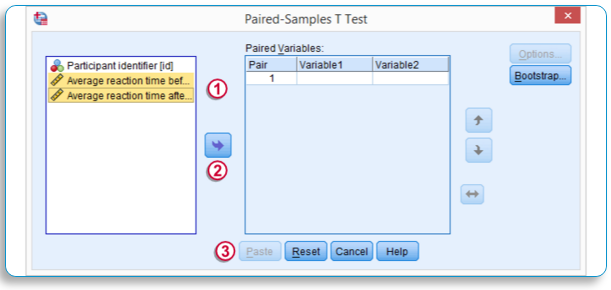
H 0: σ 1 2 - σ 2 2 = 0 ("the population variances of group 1 and 2 are equal") SPSS conveniently includes a test for the homogeneity of variance, called Levene's Test, whenever you run an independent samples t test. Recall that the Independent Samples t Test requires the assumption of homogeneity of variance - i.e., both groups have the same variance. The generalization of "Student's" problem when several different population variances are involved. Extremely unbalanced designs increase the possibility that violating any of the requirements/assumptions will threaten the validity of the Independent Samples t Test.ġ Welch, B.
A balanced design (i.e., same number of subjects in each group) is ideal. Inferences for the population will be more tenuous with too few subjects. Each group should have at least 6 subjects, ideally more. Researchers often follow several rules of thumb: Note: When one or more of the assumptions for the Independent Samples t Test are not met, you may want to run the nonparametric Mann-Whitney U Test instead. The Welch t Test is also known an Unequal Variance t Test or Separate Variances t Test. This alternative statistic, called the Welch t Test statistic 1, may be used when equal variances among populations cannot be assumed. However, the Independent Samples t Test output also includes an approximate t statistic that is not based on assuming equal population variances. When this assumption is violated and the sample sizes for each group differ, the p value is not trustworthy. Homogeneity of variances (i.e., variances approximately equal across groups). Among moderate or large samples, a violation of normality may still yield accurate p values. Non-normal population distributions, especially those that are thick-tailed or heavily skewed, considerably reduce the power of the test. Normal distribution (approximately) of the dependent variable for each group. Random sample of data from the population. 
Violation of this assumption will yield an inaccurate p value.No subject in either group can influence subjects in the other group.

Subjects in the first group cannot also be in the second group.There is no relationship between the subjects in each sample.Independent samples/groups (i.e., independence of observations).Cases that have values on both the dependent and independent variables.Independent variable that is categorical (i.e., two or more groups).Dependent variable that is continuous (i.e., interval or ratio level).Your data must meet the following requirements:






 0 kommentar(er)
0 kommentar(er)
